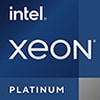Introducing Cisco+. It’s all the benefits of Cisco, now as-a-service.
Read announcementVirtual Desktop Infrastructure (VDI)
Provide users a superior experience, wherever they are and on any device, seamlessly and securely.
Contact Cisco
-
-
Call Sales:
- 1-800-553-6387
- US/CAN | 5am-5pm PT
Cisco+ Hybrid Cloud
Optimize workloads across a hybrid cloud for superior performance and great value, with flexible consumption for your on-premises infrastructure.
Why organizations choose desktop virtualization
Cisco is meeting new remote work demands that help enable any application, anywhere.
Support remote workers
Give users access to their desktops and applications at any time, on any device, regardless of whether they’re in the office or working remotely.
Improve security
Protect your IP by keeping data, virtual desktops, and applications in your secure data center and controlled by policy.
Maximize performance
Rapidly deploy and scale new or updated applications and desktop operating systems, without user disruption.
Reduce CapEx and OpEx
Centralize desktop and application patches and upgrades, while using lower-cost endpoint devices and facilitating BYOD.
Cisco VDI case studies
NA Höganäs
The power and flexibility of Cisco HyperFlex and the tight integration with VMware Horizon have allowed Höganäs to support a variety of users, applications, and devices.
NYU Shanghai
Cisco offers NYU Shanghai students an anywhere, anytime learning environment by deploying VDI on Cisco HyperFlex.
Cisco’s strategic partners help Malicis Consulting transform their business.
Cisco helps BVN speed application performance, cut costs and firmware update times.
VDI solutions on your choice of architecture
From 500 to 500,000 users, Cisco supports platform-choice flexibility with UCS and HyperFlex that are easy to deploy and right-sized to transform your business.
Ecosystem partners
Citrix
Transform the way you work with secure, intelligent workspaces from Cisco and Citrix.
NetApp FlexPod
Purpose-built for virtualized environments that allow enterprise workloads to function seamlessly at scale.
NVIDIA
Bring graphics-intensive capabilities to wherever your users need them with Cisco and NVIDIA.
Pure FlashStack
Get simple, rapid deployment of 100 percent Flash infrastructure for VMware Horizon and Citrix desktop.
VMware Horizon
Cisco and VMware innovate to provide tightly integrated solutions so you can transform your environments easily and cost effectively.
Tools and demos
Cisco Desktop Virtualization Design Navigator
Are you ready to discover the Cisco Validated Design or reference architecture that is best for your environment? Simply answer a few questions in the tool below.
Cisco Intersight demos
Discover the value of intelligent, cloud-based management with Cisco Intersight.
Watch your favorite cloud and data center videos
Get the latest updates on data center and cloud technology, upcoming features, and more.
Resources
Analyst perspectives
At-a-Glances
Solution overviews
- FlexPod Delivers Exceptional Virtual Desktops at Scale
- Cisco VDI solution overview
- Dassault Systèmes 3DEXPERIENCE Platform on Cisco UCS C240 Servers with NVIDIA T4 GPU
- Empower a Secure Remote Workforce with Cisco HyperFlex
- Healthcare providers and HyperFlex
- Simplify Desktop Delivery to a Hybrid Workforce
White papers
- Integrate Cisco Intersight Managed Cisco UCS X- Series with NVIDIA GRID and VMware
- Cisco UCS X-Series Servers with Intel Optane Persistent Memory for Virtual Desktop Infrastructure White Paper
- Delivering Superior Application Performance — Anywhere, Anytime — Using Virtual Workstations
- Delivering Superior Graphics Virtualization in Today’s Healthcare Environments
- Deploy Cisco UCS M5 Servers with NVIDIA GRID 10 on VMware vSphere 6.7 and Remote Desktop Session Hosts and Desktops
- Meeting New Remote Work Demands That Enable Any Application, Anywhere
- Deploy Cisco UCS M5 Servers with NVIDIA GRID on VMware vSphere 6.7 and Citrix Virtual Apps and Desktops 1912 LTSR
 Cisco UCS systems with Intel® Xeon® Platinum processor
Cisco UCS systems with Intel® Xeon® Platinum processor
Intel, the Intel logo, the Intel Inside logo and Xeon are trademarks of Intel Corporation or its subsidiaries.